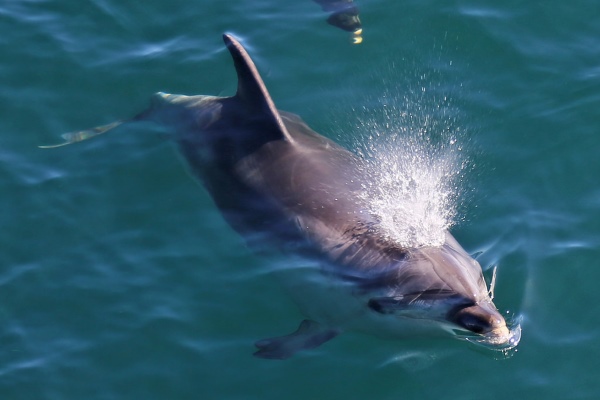Gradient Exhale for Breathing
When first teaching rhythmic breathing, to keep air management as simple as possible at the beginning, we may give the instruction to continuously exhale with small bubbles through all the non-breathing strokes. This may work for a while, but eventually, you may find that you are more comfortable with a variable pattern for exhale. Here is one that may be more suitable for when you are swimming at moderate and stronger effort levels.
You may start with these focal points separately:
- Small bubbles from nose
- Partial volume exhale, (less than half of the lungs)
- Clear airways with a blast as nose breaks the surface
- Use a final squeeze of the diaphragm to send that blast of air
You can best control the partial air exchange amount by regulating your exhale. The inhale then will simply fill up what you emptied on the exhale.

You may put all those air management focal points ideas into a choreography that spans across the three stroke breathing pattern (which is a good pattern to aim for on easy to moderate swimming intensities).
After refilling lungs, hold air briefly.
Then begin a soft exhale of bubbles from the nose on that first non-breathing stroke.
Then gradually increase the rate of exhale on the second stroke.
Then make a last squeeze of the diaphragm to blast air out of the nose and mouth, clearing the airways just as those openings break the surface – just like dolphins do when they are breaking the surface to breathe.

Then your lungs are primed with negative pressure to immediately start pulling air back in, without necessarily needing you to pull forcefully.
Take a quick sip of air to refill that partial empty space.


